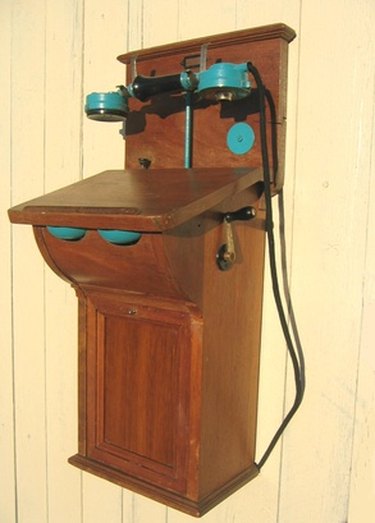
In 1876, Alexander Graham Bell, a teacher of the deaf, beat out fellow inventor Elisha Gray by a few hours in filing for one of the most valuable American patents ever awarded. Bell, Gray, and Thomas Edison all had been working on independent projects to transmit sound by telegraph. Bell called his device an "electrical speech machine."
Relationship to Telegraph
Video of the Day
In 1875, Bell and his assistant, Thomas A. Watson, accidentally discovered that sound could be transmitted if current ran continuously in a telegraph wire. In contrast, telegraphs were sent by turning current on and off. Bell patented his invention before creating a workable telephone. It appears that he subsequently gained his idea for a successful transmitter from Gray's research, which detailed a liquid transmitter.
Video of the Day
Transmission of Sound
Bell and Watson's first working telephone was a strange-looking device. The speaker bellowed into the wide end of a funnel, which was attached to a diaphragm that connected to a rod. The rod hung down into a cup of acid water, which was electrified by a battery. Voice vibrations caused the rod to go up and down, causing electrical resistance in the liquid to vary. A separate wire attached the cup to a receiver in another room of their workshop, which transmitted this altered current to another diaphragm that translated the vibrations into sound.
Fun Fact
The Western Union Telegraph Company turned down Bell when he tried to sell the company his patent for $100,000. The modern telephone equipment industry is worth billions.